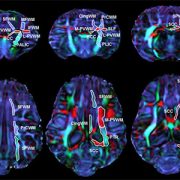Can pyruvate support metabolic function following heart surgery?

Nurses rush a child to the cardiac intensive care unit at Children’s National Health System.
Can pyruvate, the end product of glycolysis, help improve cardiovascular function in children who have cardiopulmonary bypass surgery and suffer from low cardiac output syndrome (LCOS)? This question is one that Rafael Jaimes, Ph.D., a staff scientist at Children’s National Heart Institute, a division of Children’s National Health System, is studying, thanks to a two-year grant from the American Heart Association.
The competitive grant awards Dr. Jaimes with $110,000 to study how pyruvate may help improve cardiac output among pediatric patients with LCOS. The compound aims to stimulate metabolic function, now treated by inotropic agents, such as dobutamine and milrinone. These agents ensure optimal delivery of oxygen from the heart to the brain, as well as to other organs in the body, following heart surgery. While these agents help patients with cardiac dysfunction, there is still a critical need for safe and effective therapies.
“If there’s any detriment in cardiac output, the heart’s function begins to degrade,” explains Dr. Jaimes. “You see a downward spiral effect with reduced cardiac output because the heart is dependent on its own perfusion. It needs to pump blood throughout the body to survive.”
This is where the pyruvate study, and the grant, will be applied: Can pyruvate target the essential muscle of the heart and reverse this cardiac destabilization – and as soon as possible?
“By increasing the metabolic output of the heart’s local muscle, cardiac output increases,” Dr. Jaimes explains. “That’s going to lead to better recovery.”
Better recovery could be measured by how fast a child recovers from heart surgery as well as how much time they spend in the hospital, clinically referred to as throughput. A faster recovery could also influence a child’s quality of life and reduce overall health care costs.
Based on preliminary data that shows pyruvate improves cardiac function in experimental models after ischemic insult, which is what happens when pediatric patients undergo cardiac surgery, Dr. Jaimes believes the results will likely replicate themselves in his preclinical models.
To start, he’ll test pyruvate using 100 blood samples and discarded tissue from patients. The blood samples will be tested for metabolic markers, including measured pyruvate levels.
Part of what encouraged Dr. Jaimes to study how this compound could complement or replace standard therapies was the encouragement he received from his mentors in the field.
“Nobody has looked into using pyruvate for almost 30 years,” says Dr. Jaimes. “It’s not commercially favorable, there’s no patent on it, it doesn’t have a lot of marketability and there are no financial incentives, so it’s been put aside.”
As part of a discussion with cardiologists at a medical conference in Washington, Dr. Jaimes brought up the idea of using pyruvate for pediatric heart surgeries and received positive feedback.
“Once everyone’s eyes lit up, I knew I was on to something,” says Dr. Jaimes about the encouragement he received to pursue this study.
“You put lactate and glucose in your IV solutions,” adds Dr. Jaimes. “Pyruvate is an essential nutrient. It’s almost an essential sugar so there’s no reason not to put it in. If these cardiologists are intrigued by the project, maybe the American Heart Association will be, too.”
In addition to funding the study, which could support future research about how metabolic makers in the blood can be stimulated to fast-track recovery following heart surgery, the American Heart Association grant is specific to pediatric health outcomes.
“The current state of pharmaceutical treatment for patients recovering from cardiac surgery is designed and created for adults,” says Dr. Jaimes. “From our research in pediatrics, we know that children aren’t small adults.”
Dr. Jaimes explains that children are different on an anatomical and physiological level. Their cells even look and function different, compared to adult cells, because they haven’t matured yet.
While congenital heart defects are rare, they affect 1 percent, or 40,000 births worldwide, they often require multiple surgeries throughout a child’s lifespan. LCOS impacts 25 percent of patients following cardiopulmonary bypass and the timing of treatment is important. In severe cases, insufficient cardiac output following surgery could impact a child’s long-term development, ranging from reasoning, learning, attention and executive function, to developing age-appropriate language and social skills.
“The metabolic insufficiencies I’m looking at, which may help improve the muscle function of the heart, are just one piece of a bigger puzzle in pediatric cardiology,” notes Dr. Jaimes about ongoing research at Children’s National Heart Institute. “We already know pyruvate is safe. We just have to see if it’s effective in supporting a patient’s recovery in the intensive care unit.”
Dr. Jaimes will work with his research mentor Nikki Posnack, Ph.D., assistant professor at the Children’s National Heart Institute, on this preclinical study throughout the grant’s lifecycle, which starts in early January 2019 and ends in late December 2020.





